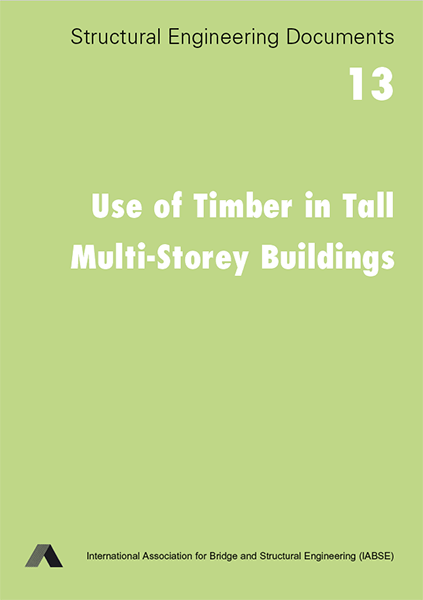Use of Timber in Tall Multi-Storey Buildings

|
|
|||||||||||
Détails bibliographiques
| Auteur(s): |
Ian Smith
Andrea Frangi |
||||
|---|---|---|---|---|---|
| Médium: | livre | ||||
| Langue(s): | anglais | ||||
| Editeur: | International Association for Bridge and Structural Engineering (IABSE) | ||||
| Publié à: | Zurich, Suisse | ||||
|
|||||
| Page(s): | 178 | ||||
| Nombre total de pages (du PDF): | 190 | ||||
| Année: | 2014 | ||||
| ISBN-10: | 3-85748-132-3 | ||||
| ISBN-13: | 978-3-85748-133-8 | ||||
| DOI: | 10.2749/sed013 | ||||
| Collection: | Structural Engineering Documents (No. 13) | ||||
| Couverture: | broché | ||||
| Remarques: |
Since the dawn of civilization, timber has been a primary material for achieving great structural engineering feats. Yet during the late 19th century and most of the 20th century it lost currency as a preferred material for construction of large and tall multi-storey building superstructures. This Structural Engineering Document (SED) addresses a reawakening of interest in timber and timber-based products as primary con-struction materials for relatively tall, multi-storey buildings. Emphasis throughout is on holistically addressing various aspects of performance of complete systems, reflecting that major gaps in knowhow relate to design concepts rather than technical information about timber as a material. Special con-sideration is given to structural form, fire vulnerability, and durability aspects for attaining desired building performance over lifespans that can be centuries long. |
||||
| Acheter chez: | |||||
| Copyright: | © 2014 International Association for Bridge and Structural Engineering (IABSE) | ||||
| License: | Cette oeuvre ne peut être utilisée sans la permission de l'auteur ou détenteur des droits. |
||||

